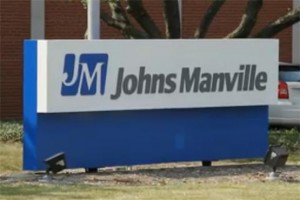California Adopts “Sophisticated Intermediary” Defense
By Don Willenburg, Oakland on May 25, 2016
Earlier this week, the California Supreme Court formally adopted the “sophisticated intermediary” defense for product suppliers. The court significantly restricted applicability of the defense, however, and ruled that there was insufficient evidence in this case that Johns-Manville qualified as such an intermediary.
 Webb v. Special Electric Co., Inc. articulated the defense as follows: “a [product] supplier may discharge its duty to warn end users about known or knowable risks in the use of its product if it: (1) provides adequate warnings to the product’s immediate purchaser, or sells to a sophisticated purchaser that it knows is aware or should be aware of the specific danger, and (2) reasonably relies on the purchaser to convey appropriate warnings to downstream users who will encounter the product.”
Webb v. Special Electric Co., Inc. articulated the defense as follows: “a [product] supplier may discharge its duty to warn end users about known or knowable risks in the use of its product if it: (1) provides adequate warnings to the product’s immediate purchaser, or sells to a sophisticated purchaser that it knows is aware or should be aware of the specific danger, and (2) reasonably relies on the purchaser to convey appropriate warnings to downstream users who will encounter the product.”
Perhaps the most significant hurdle to use of the defense in the future is the requirement that “a product supplier must show not only that it warned or sold to a knowledgeable intermediary, but also that it actually and reasonably relied on the intermediary to convey warnings to end users.”
The challenge posed by that requirement was exemplified here, where the Supreme Court ruled that Special Electric, a 2-person broker of raw crocidolite asbestos, had a duty to warn asbestos behemoth Johns-Manville and the downstream users of Johns-Manville products that incorporated Special Electric-brokered raw material. In part, this reflected a welcome understanding about the divergent toxicities of the different minerals classified together as asbestos. “Although the record clearly shows Johns-Manville was aware of the risks of asbestos in general, no evidence established it knew about the particularly acute risks posed by the crocidolite asbestos Special Electric supplied.”
Webb identified four other reasons why the evidence did not justify the trial court’s decision to grant a defense JNOV in the face of a jury verdict finding negligence.
- “The evidence is disputed about whether Special Electric consistently provided warnings to Johns-Manville during the relevant time frame.” Note that it is not just “warnings,” but “consistent warnings.”
- “[P]laintiffs presented evidence that at least one Special Electric salesperson told customers crocidolite was safer than other types of asbestos fiber, when the opposite was true. If the jury credited this evidence, it may have found it unreasonable for Special Electric to believe Johns-Manville was so sophisticated that a warning about the particular dangers of crocidolite asbestos was not called for.”
- Further, “the record does not establish as a matter of law that Special Electric actually and reasonably relied on Johns-Manville to warn end users like William Webb about the dangers of asbestos. We recognize that direct proof of actual reliance may be difficult to obtain when, as in the case of latent disease, the material was supplied to an intermediary long ago. However, actual reliance is an inference the factfinder should be able to draw from circumstantial evidence about the parties’ dealings.”
- “[T]he jury could have reasonably determined that any reliance on Johns-Manville would have been unjustified. Plaintiffs presented testimony from a former Johns-Manville employee criticizing the company’s handling of asbestos warnings and asserting it had failed to warn its own workers about the hazards of asbestos before the mid-1970s.”
While this evidence may be slim, it was enough to support the jury’s finding of negligence and thus to overrule the trial court’s grant of JNOV to the defense. The evidence in the case may also have been sufficient to support a jury finding that Special Electric was entitled to rely on the sophisticated intermediary defense, but the issue was presented only to the court and not to the jury.
Webb overruled an earlier Court of Appeal decision that had rejected the sophisticated intermediary defense on the rationale that “that doctrine, where it applies at all, applies only if a manufacturer provided adequate warnings to the intermediary.” Webb ruled that “[t]his assertion cannot be reconciled with our analysis in Johnson [v. American Standard, the key California “sophisticated user” decision].… Insofar as it expresses a different view, Stewart v. Union Carbide Corp. … is disapproved.” So in at least some cases a defendant that provides no warnings can rely on the sophisticated intermediary defense.
A footnote that is off the main point is nevertheless a troubling sign for product liability defendants, because it appears to allow very speculative evidence about whether a plaintiff ever encountered a defendant’s product. “Plaintiffs introduced evidence that Webb was exposed to dust from Johns-Manville products containing trace amounts of crocidolite at roughly the same time Special Electric was supplying crocidolite asbestos to Johns-Manville. While evidence of the link could be stronger, it is nonetheless sufficient for the jury to have found that Special Electric’s asbestos was a substantial factor in causing Webb’s mesothelioma.” “[E]vidence of the link could be stronger” is an understatement. This footnote portends both an easier path for plaintiffs to “prove” exposure, and a court not willing to put much “substantial” in “substantial factor.”

 A Ninth Circuit panel including former Chief Judge Kozinski last week rejected the “every exposure” theory advanced by many plaintiff expert witnesses, who thereby try to impose liability on defendants responsible for only vanishingly small amounts of asbestos.
A Ninth Circuit panel including former Chief Judge Kozinski last week rejected the “every exposure” theory advanced by many plaintiff expert witnesses, who thereby try to impose liability on defendants responsible for only vanishingly small amounts of asbestos.